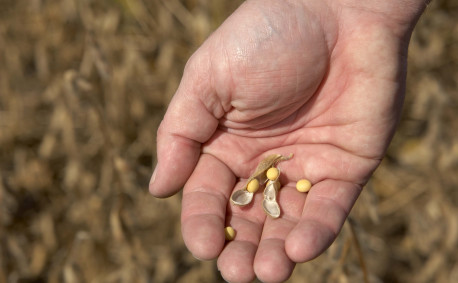Six Cotton Byproducts that Might Surprise You
If you were asked to name a few products made from cotton, we’d be willing to bet “clothing” would be one of the first answers you’d give. And you would be correct! Cotton has been used to make attire for centuries, dating back to at least 5000 B.C.
But what else is this plant used for? In the United States alone, over 20 million bales of cotton were produced in 2017, so there must be more to the story than denim and blouses.
It turns out cotton is responsible for a whole slew of things most of us would never guess. Here are six cotton byproducts that might surprise you!
1. Baseballs
The ball needed to play America’s pastime is more complicated than one might imagine, and cotton is an important piece of the puzzle.
Baseball centers — made of cork and rubber — are wrapped in three different kinds of yarn before being covered in leather. The outermost layer of yarn is a blend of polyester and cotton. This combo maintains the circular shape of the ball, so it will still remain a sphere even after a good whacking by a bat.
2. Packing Material
Not only is cotton an ingredient in a special blend of packing material, this concoction is biodegradable! The packaging is called Mushroom® Materials and was developed by Cotton Incorporated and Ecovative Design.
The malleable mixture forms into whatever shape is needed and can be added to soil as a plant fertilizer after use — also known as composting.
3. Explosives
There’s a lot of chemistry happening here, but basically the short little fibers — called “linters” — attached to the cotton seed are removed and mixed with different acids to create guncotton.
Incredibly flammable, guncotton is used to make gunpowder, rockets and other explosives.
4. Money
Ah, money, it makes the world go ’round! Which, it turns out, wouldn’t be possible without cotton.
Would you believe the plant makes up 75% of our paper currency? According to the National Cotton Council of America, one pound of dollar bills contains three quarters of a pound of cotton.
5. Medical Supplies
Since cotton is absorbent, hypoallergenic and soft, it only makes sense to use in a variety of medical supplies. Here are just a few examples.
External Products
- Bandages
- Wound dressings
- Hospital gowns
- Face masks
- Cotton balls
Internal Products
- Cotton swabs
- Tampons
Hygiene Products
- Diapers
- Sanitizing wipes
6. Cottonseed Oil
Sure, you’ve heard of olive oil, coconut oil, maybe even avocado oil, but have you ever used cottonseed oil? Just like the others, this product is ready to help with your baking and frying needs.
Beyond work in the kitchen, cottonseed oil is also used in cosmetics. A key ingredient in many eyeshadow palettes, skin and hair care products, it works as a conditioning agent to make the user silky smooth.
As you can see, our fuzzy little friend does more than produce clothing — a huge contribution alone — but comes into play in almost every aspect of our lives.




